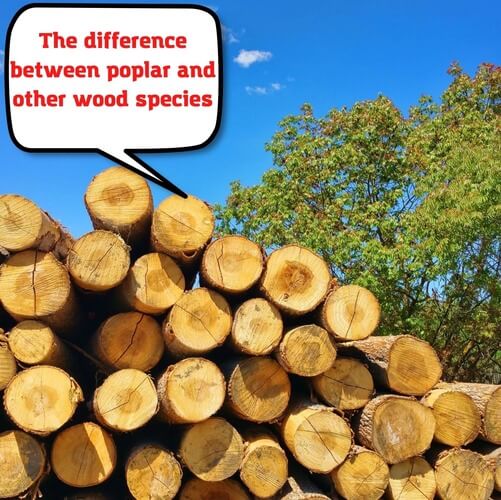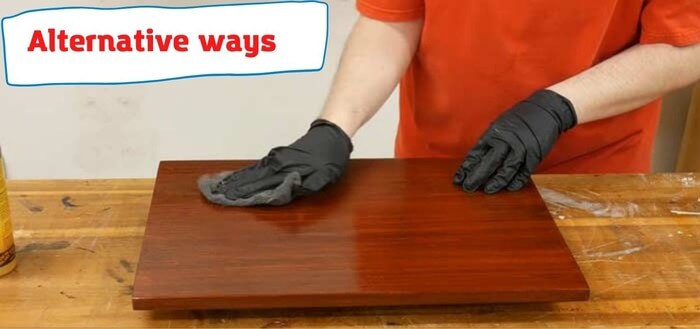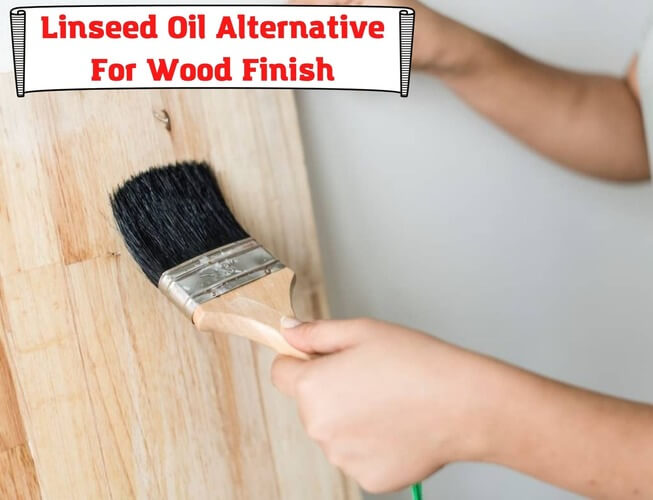
When you treat the wooden surfaces, you need to know for sure that the oil you choose for this is appropriate. We are fond of Danish Oil because it’s quite affordable, widespread, and really easy to use. Danish Oil is basically good for any kind of wood and it covers the surface great without much effort on your side. But you will still need to know some tricks to apply it on poplar because this type of wood is really special.
In our today’s article, we’ll answer some of the most popular questions about Danish Oil on poplar, the ways to apply it, and the results you will get. Here are some things we’ll discuss in the article:
- Danish Oil components and types to choose;
- poplar surface treatment tips;
- Danish Oil on poplar – some concerns;
- pros and cons of Danish Oil on poplar and other surfaces.
Why is Danish Oil so popular?
Danish Oil is the type of oil for a wood finish that is extremely popular all over the world. This is a natural oil that is often based on tung oil or linseed oil (after polymerization). It’s hard to say what the formulation or recipe is to prepare the Danish Oil, so every manufacturer will do it with some unique technologies. The components and the ways to produce Danish Oil may differ much from one company to another.
Here are some special effects that you’ll get after applying Danish Oil on any wooden surface:
- the oil creates a special satin finish that looks unique and can only be achieved by a few combinations of other oil types;
- the water resistance is quite good, the finish works well even if the wooden surface comes in contact with water;
- the finish isn’t slippery, it’s not glossy at all, so people often choose it for practical things they make of wood;
- you can buy Danish Oil with different grades of coloring to stain the wooden thing to a certain point.
If you need to cover a big surface, you may count Danish Oil with a simple rule: 600 square feet of wood can be covered with 1 gallon of the oil. Usually, 3 coats are applied. You may use a simple brush for oil or even a cloth. Shortly after you applied each layer, better wipe off any excess oil to avoid thick layers and drops.
The application of Danish Oil is really simple compared to other popular choices. Each layer will need at least 4 hours to rest before applying the next coat. But some types of wood will need up to 24 hours of rest. It’s quite important to create an even coat each time you work with Danish Oil. Otherwise, the surface won’t be as good as it should be and you will have to finish it with some additional methods again and then apply another coat of the oil.
Why is poplar so different from other wood types?

As you may know, any type of wood has hard and soft spots. When you put on some stain, the soft parts of the wood will take more of the oil while the harder spots won’t absorb nearly any of it. With oak, this problem can be neglected because the whole surface is quite hard and you will only need a little stain or oil to cover it evenly. But poplar is a little harder to work with.
Whatever type of oil you use, you will need to make sure that you wipe off the excess of your stain or oil from the wood once you complete the coating. You shouldn’t wait for too long – just 5-10 minutes after you put on some oil and you may wipe off the excess. Otherwise, softer parts of the poplar surface will get more oil and will look darker while hard parts will remain light and only partially protected by oil.
Any penetrating stain or oil won’t work well for poplar. Some experts will go for gel stains when they want to work with poplar, and this will be a good choice. But you can still use Danish Oil or any other oil if you want. Just keep in mind that you will need to wipe off the excess of the oil each time you coat the wooden surface.
Poplar is not the ideal wood for staining. Yes, it’s a hard wood, but it’s certainly softer than many other hardwood types. That’s why it’s usually referred to as “paint-grade” wood. But painting is not always the best idea for a person who works with this wood. So staining is still possible, and you will just need to follow some tips to make your poplar surface look nice.
Many people ask whether they should use a pre-stain coating or wood conditioners before applying Danish Oil on poplar. The answer isn’t that clear. We wouldn’t recommend any conditioners or pre-stain materials, because they are chemicals you will add to your wood. If you use natural Danish Oil on natural wood, you will get 100% natural results. And yes, they work well without any pre-stain materials. But if you want, you may use some of them.
Using Danish Oil on poplar – any concerns?
Well, some experts would say it’s a bad idea to apply any kind of natural oils on poplar. But painting the wood is not always the best choice. So you can go with any natural oil but only with some precautions to make the wood surface look nice.
You will need to remember these things:
- Poplar doesn’t absorb any oil well, so you will need to wipe off any excess oil after each coat. Otherwise, your wood will look like a leopard.
- Also, it’s extremely hard to achieve an even coloring whatever instruments and techniques you use. Some spots will still be lighter or darker.
- Quite a lot of oil may be wasted because you will need to wipe it off. This is also a factor of concern if you have a lot of poplar items to be stained.
- You will need to sand the surface to be nearly ideal and to clean it from dust because otherwise, your poplar will look awful after you finish with an oil coating.
As you see, using Danish Oil on poplar is possible. But you will need to prepare for this. Mainly, you will have to sand the piece of wood carefully with 220 sandpaper to achieve a really smooth surface. Then, you will have to remove all dust. After that, you may want to apply some conditioner or pre-stain solutions to ensure that the stain will be even and beautiful. The oil will have to be put on poplar in three or four coats with quite big intervals between them. Any excess oil should be wiped off immediately.
Other ways to finish poplar

Even though poplar is apparently not the best wood type for staining, many experts still prefer it to any other wood type when making furniture and other things. The reason is simple – this wood is much cheaper, it still looks really good and is appropriate for many applications. So if you don’t want to face all those possible problems with staining poplar, you may choose other ways to finish the wooden surface.
- Gel stain. This is the most appropriate stain for poplar if you want to apply it on raw poplar. Gel stain won’t absorb much and it will create an even color after just two coats. Although gel stain is a little more expensive than Danish Oil, it’s easier to work with when finishing.
- Paint. Poplar is a paint-grade wood type, so in most cases, it will be easier to paint the wood than to stain it. Some people will say it will look worse if you just paint the wooden surface instead of using some oil, but it depends on what kind of product you choose. Some wood paint types will look nice.
Also, you may make things easier for you by applying a kind of wood conditioner or a pre-stain solution before applying Danish Oil or any other type of natural oil. This will make the color more even and good-looking.
Final words
If you are about to start working with poplar, you need to know that this is a special wood type that requires special finishing. Not every poplar surface will stain evenly with Danish Oil or any other natural oil. You will need to find some alternatives or to cover your wood with a special conditioner. You may also go with another oil type like gel stain or something else that is recommended for poplar by professionals.
Also, it’s important to remember some simple rules of staining poplar that we’ve offered in our article. Once you stick to the rules and choose optimal materials, you will succeed in making your poplar surface look nice. But if you just put a thick coat of Danish Oil on poplar, you are unlikely to be glad about the results.
- Can You Unmix Paint: Techniques, Consequences, Alternatives - February 23, 2024
- Does Primer Need to be Mixed? Effective Primer Application - February 22, 2024
- How to Make Old Paint Usable Again: Retrieving and Preserving Paint - February 21, 2024



